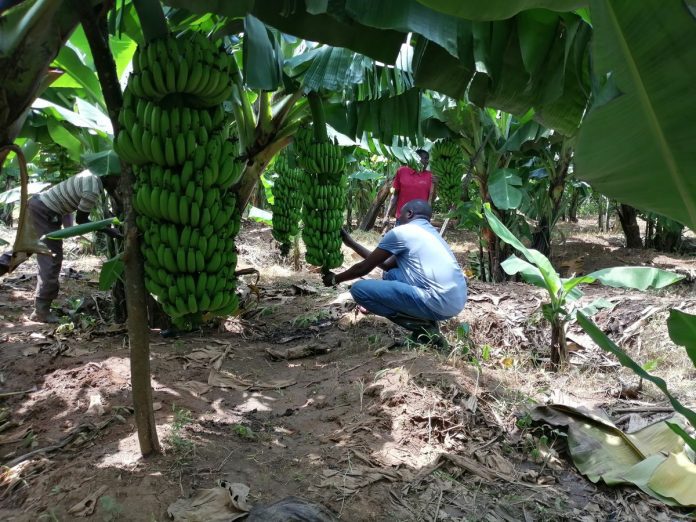Tissue culture is a modern technology that is transforming agriculture across the globe. This technique is used to maintain or grow plant cells, tissues, or organs under sterile conditions.
Farmers across the globe have discovered the trick of using the technique to maximize yields. Boaz Odemu Bulimu is one of the farmers making profits from Tissue Culture banana farming.
He ventured into farming the fruit in 2013 but started with the traditional variety as he did not know much about making profits in banana farming.
“Before adopting the Tissue Culture Banana, I grew traditional varieties which I sold for around Sh 50 a whole banana. I also did subsistence farming of maize, beans, and sweet potatoes. We were content with what we earned, we didn’t know any different.” He said.
Complete Guide to Successful Banana Farming in Kenya
He revealed he was introduced to banana farming by his neighbor, who offered him some suckers to try his hand at growing bananas.
Having worked at the Kenya Agricultural and Livestock Research Organization (KALRO) for several years, Bulimu had good farming skills and decided to embark on banana farming for subsistence and commercial purposes.
“Banana farming and its benefits to the population are now becoming a reality in Kenya, with more farmers realizing the potential of the crop in terms of food security,” he added.
On his five-acre farm in Lugari sub-county, Bulimu has developed an elaborate water harvesting system to maintain good water drainage. His farm hosts about 365 stems of the crop.
How I achieved success with banana farming
Bulimu’s farm has 20 banana varieties, with tissue culture and East African Highland Banana (EAHB) accounting for the highest number. He gets a minimum of Sh750,000 per year from fresh banana sales.
“I used to harvest about ten sacks of maize from the one-acre piece of land, but the returns from the bananas are 10 times more than that of maize,” he said.
The farm produces about 10 mature bunches monthly. Bulimu also intercrops his plants with other crops such as cassava, beans, varieties of indigenous vegetables, and potato.
He explains that bananas can be grown in a wide range of soils as long as there are good drainage and adequate fertility. They can tolerate short periods of flooding but do require good soil aeration.








